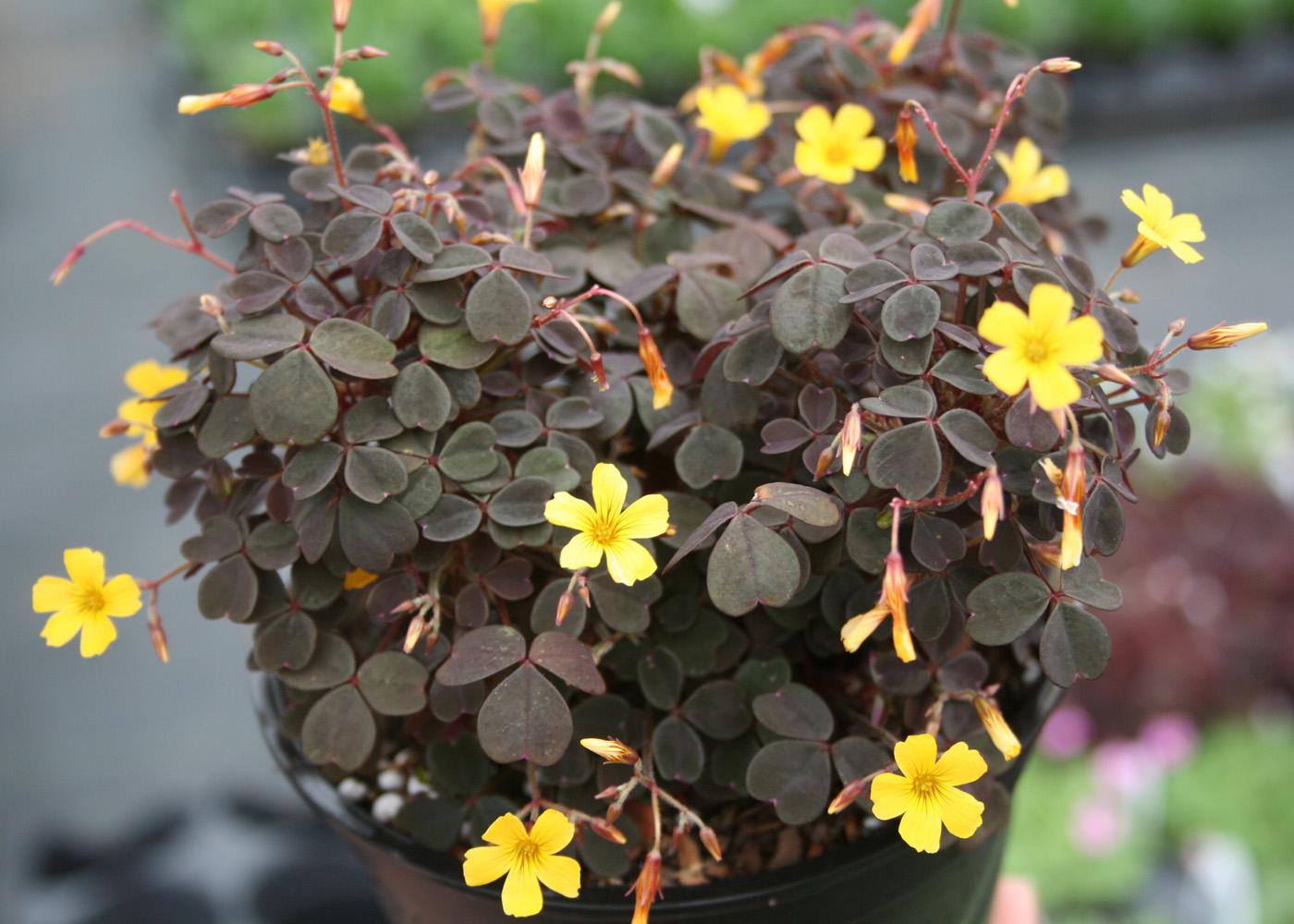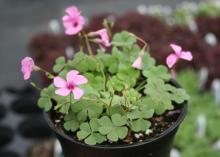Information Possibly Outdated
The information presented on this page was originally released on March 15, 2011. It may not be outdated, but please search our site for more current information. If you plan to quote or reference this information in a publication, please check with the Extension specialist or author before proceeding.
Mississippians find luck with shamrocks
St. Patrick’s Day triggers increased interest in bringing home from the garden center a three-leafed shamrock. In addition to the traditional green, more and more varieties are showing up with gorgeous purple to almost black foliage.
The Charmed series offers Velvet and Wine varieties, both with black/purple foliage and pink flowers. During the summer months, place shamrocks outside in full shade as the sun will bleach the leaves. These plants will get 12 to 16 inches tall and wide. Velvet and Wine make good planting partners in shade containers. As filler plants, they will mingle and poke out between the other plants in the container.
Shamrocks, sometimes called clovers, are part of the oxalis family. They make great houseplants, but there are some outstanding oxalis selections for the landscape. These sterile and noninvasive landscape varieties are not the weedy scourges we battle each year. Known botanically as Oxalis vulcanicola, these landscape oxalis grow about 6 inches tall and have a spreading habit of a foot or greater. They can be planted in full to partial sun.
Zinfandel is a purple/black selection with bright yellow flowers, but my favorite shamrock is Molten Lava. The foliage is primarily chartreuse when planted in partial shade, but in full sun, it lives up to its name, becoming a bright lime tinged with fiery yellow/orange. You might want to label these in your landscape, as they do look like the weedy species of oxalis. Labels will stop someone from thinking they are doing you a favor by pulling them up.
In Mississippi we do have a little native oxalis called cottage pink wood sorrel. I always enjoy seeing the cheery clear pink flowers in the springtime. They bloom much of the summer in a shady part of my yard. In full sun, the blossoms are spring visitors that go to sleep in the summer when the temperatures get too high, then awaken when cooler weather returns the next spring.
Once established, oxalis species are drought tolerant when grown in the landscape. In containers, they will need to be watered.
So why are shamrocks and oxalis associated with St. Patrick’s Day? Patrick returned to Ireland to spread the gospel of the Holy Trinity, but the congregations were having difficulty understanding the concept. He went to the garden and selected a three-leafed shamrock to show the three leaflets on one leaf.
While they normally have three leaves, sometimes there is a mutation that produces a fourth leaf. Finding the rare four-leafed clover was considered an omen of good fortune by the ancient Celtic people. Children still spend enjoyable summer afternoons looking through patches of clover for that lucky four-leafed clover.
So try some of these oxalis -- they just may turn out to be a good-luck charm in your garden and landscape this year.









